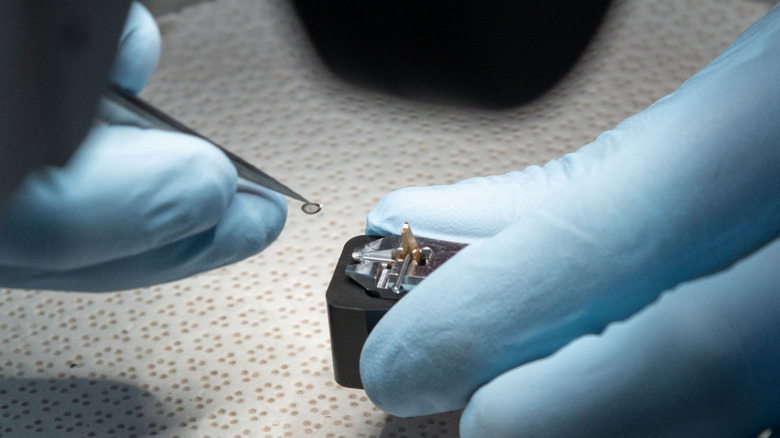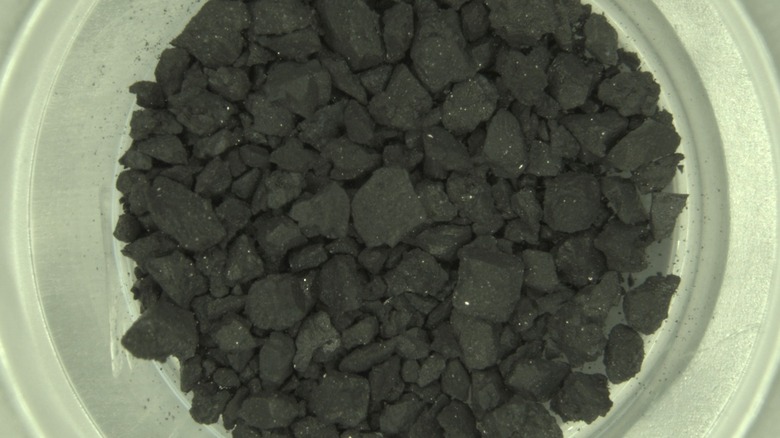Scientists Find A Building Block Of Life In Asteroid Sample
Japan's Hayabusa 2 mission brought back samples from the asteroid Ryugu in December 2020, and ever since, they have been studied in laboratories across the globe, including at NASA. Last year, research published in "Astrophysical Journal Letters" claimed that the asteroid's grain samples contain dust older than our solar system. Now, a new analysis from the experts over at Japan's Hokkaido University has discovered uracil, a molecule that is considered one of the building blocks of life. Following the chemical confirmation of uracil in the asteroid samples, the team notes in "Nature" that "molecules of prebiotic interest commonly formed in carbonaceous asteroids including Ryugu and were delivered to the early Earth."
We know DNA forms the building block for all organisms living and breathing on Earth. But there is a certain class of organisms — especially viruses like HIV and influenza — that rely on RNA. One significant difference between DNA and RNA is that the former is a helix of two polynucleotide chains, while RNA is a single-strand molecule. On a chemical level, they share three nitrogen-containing biological compounds that contain genetic information — adenine (A), cytosine (C), and guanine (G) — but the fourth and final base in DNA is thymine (T), while RNA differs by using uracil (U).
Differences aside, one of the biggest takeaways from the latest research published in "Nature" is that the fundamental chemicals that form the building blocks of life on Earth can be created in space and could be transferred to planets like Earth.
Did life chemically originate in space?
The detection of uracil was made after soaking the asteroid samples in hot water and giving them an acid bath, followed by spectrometric analysis. The Ryugu sample analysis also canceled skepticism that previous discoveries of organic compounds in asteroid samples could be due to contamination from Earth's atmosphere. That's because the Ryugu samples were delivered to Earth in sealed containers. The findings once again bring the fringe idea of panspermia into the limelight; it claims that life originates in space and is distributed to other planets by celestial bodies like comets and meteorites. However, it remains unproven and is considered a wild hypothesis in scientific galleries.
In addition to Uracil, the team also uncovered the presence of other organic compounds like nicotinic acid, which is also known as Vitamin B3, and a bunch of other nitrogen-based organic compounds such as amino acids and amines that are an integral part of proteins. The team postulates that these complex compounds were formed when simpler chemicals like ammonia and formaldehyde were exposed to varying environmental extremes on different parts of the asteroid Ryugu.
Notably, the team made the discovery from the analysis of around 23 milligrams of asteroid sample, partly because the Hayabusa2 mission only brought around 5.4 grams of rock and dust fragments. The team is now hedging its hopes on NASA's OSIRIS-REx mission, which is bringing back nearly 400 grams of material from the asteroid Bennu later this year, for more in-depth and critical comparative analysis.

